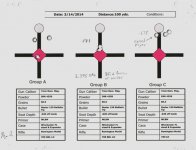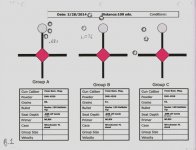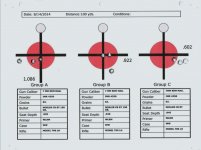Darkhorse
Handloader
- Mar 14, 2014
- 832
- 212
http://forum.snipershide.com/snipers-hi ... uracy.html
I just found this thread today and coincidentally "Tripwire's" methods are almost identical to my own. I had never heard about OCW etc. before, but after working with a Browning BOSS extensively I was searching for a way to apply those principles to a regular barrel.
The barrel in question is a stock M700 7mag. and my load test targets all show what "Tripwire" describes. I'm sold on this method and sticking to it.
Just read the thread and I trust he explains it all better than I could.
Keep in mind I'm talking about the final tweaking to find the accuracy node. Any powder choice, charge weight, pressure tests etc. have already been done prior to this point and in no way am I touching on those subjects with this post.
MODERATORS: If this post violates any rules concerning a posting from another Forum or anything else please delete the thread.
I just found this thread today and coincidentally "Tripwire's" methods are almost identical to my own. I had never heard about OCW etc. before, but after working with a Browning BOSS extensively I was searching for a way to apply those principles to a regular barrel.
The barrel in question is a stock M700 7mag. and my load test targets all show what "Tripwire" describes. I'm sold on this method and sticking to it.
Just read the thread and I trust he explains it all better than I could.
Keep in mind I'm talking about the final tweaking to find the accuracy node. Any powder choice, charge weight, pressure tests etc. have already been done prior to this point and in no way am I touching on those subjects with this post.
MODERATORS: If this post violates any rules concerning a posting from another Forum or anything else please delete the thread.








